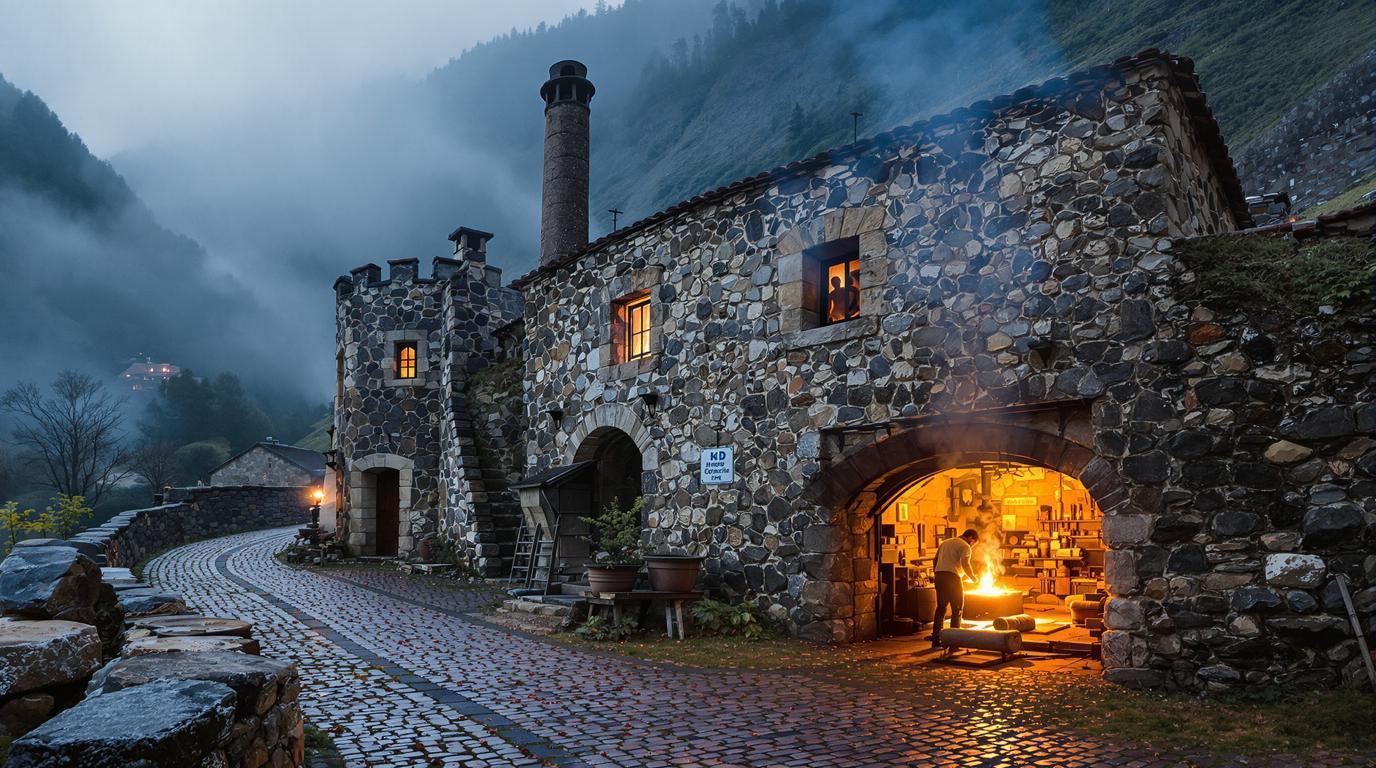In the mountains of Auvergne, Thiers has been forging blades for over 600 years. The town’s master craftsmen work behind closed doors, protecting ancient techniques from the growing tide of curious tourists who arrive seeking Instagram-worthy knife-making experiences.
This isn’t the France you’ll find in guidebooks. Local artisans have watched their sacred craft become a spectacle, and many are quietly pushing back against tourism that threatens their living heritage.
The Confrérie du Couté de Tié created strict protections in 1994, but even these measures struggle against modern tourism pressures. What I discovered during my recent visit reveals a community torn between sharing their art and preserving it.
The workshops tourists never see
Family forges that refuse visitors
Behind the tourist-friendly Fontenille Pataud workshop lies a network of private family forges that have operated for generations. These master craftsmen work exclusively for local clients, creating custom blades using techniques passed down through bloodlines rather than taught in weekend workshops.
The four-person rule that protects traditions
INSERFAC limits groups to just four participants, but many locals believe even this is too many. Master forger Jean-Claude Mercier told me that authentic blade tempering requires absolute silence and concentration—something impossible with constant tourist chatter echoing through ancient stone workshops.
Ancient techniques under threat
The tempering secrets locals guard fiercely
Traditional Thiers blades undergo a 72-hour tempering process that tourists never witness. This sacred ritual happens in pre-dawn hours when workshops are closed, using furnace temperatures and timing formulas that families have protected for centuries.
Why apprenticeships are suffering
Local apprentices now compete with tourists for master craftsmen’s attention. The traditional seven-year apprenticeship system is breaking down as masters spend more time entertaining visitors than teaching the next generation of blade smiths.
The cultural preservation battle
Seasonal restrictions that locals demand
The Knife Making Museum operates controlled hours throughout July, but locals are pushing for complete tourist restrictions during traditional harvest seasons. These months once allowed craftsmen to focus on creating winter tool inventories for mountain communities.
Protected neighborhoods where tourists aren’t welcome
The old quarter’s residential streets house working families whose ancestors forged blades for French royalty. Many have placed discrete signs requesting tourists respect private spaces where children still learn traditional metalworking through family mentorship rather than commercial workshops.
The authentic experience locals offer instead
Invitation-only demonstrations for respectful visitors
Master craftsmen occasionally invite genuinely interested visitors to witness private demonstrations. These rare opportunities require personal introductions through local connections and demonstrate respect for the craft’s spiritual significance beyond mere tourist entertainment.
The seasonal festivals that prioritize culture over commerce
May’s Coutellia festival maintains focus on artisan networking rather than tourist sales. Local craftsmen use these gatherings to share innovations, discuss preservation challenges, and strengthen bonds that commercial tourism often weakens through competitive pressures.
Understanding Thiers requires recognizing that authentic craftsmanship exists in the spaces between tourist experiences. The town’s future depends on finding balance between sharing cultural heritage and protecting the living traditions that make it meaningful.
Visit with genuine curiosity rather than mere consumption. Respect the craftsmen’s protective instincts as guardians of something irreplaceable, and you might discover that the most profound experiences happen when locals choose to share their world rather than feeling pressured to perform it.
Essential information for respectful visitors
When should I visit Thiers to respect local traditions?
April through September offers the best workshop access, but avoid harvest season (late August-September) when craftsmen focus on traditional tool-making for mountain communities. July provides optimal weather while respecting local rhythms.
How can I experience authentic blade-making without disrupting artisans?
Contact workshops directly rather than booking through tour operators. INSERFAC’s small group limit and Fontenille Pataud’s emphasis on quality over quantity ensure more meaningful interactions with genuine craftsmen.
What should I expect to pay for authentic experiences?
Museum entry starts at €6, but private workshop sessions cost significantly more. Authentic experiences prioritize learning over entertainment, requiring genuine interest in the craft’s cultural significance beyond tourist novelty.
Are there restrictions on photographing traditional techniques?
Many workshops prohibit photography of tempering processes and tool-making methods. Respect these boundaries as protection of intellectual property that families have guarded for centuries.
How do I distinguish authentic workshops from tourist attractions?
Authentic workshops focus on teaching rather than selling, maintain traditional apprenticeship programs, and often require advance arrangements. Tourist attractions prioritize group processing over individual craft instruction.
